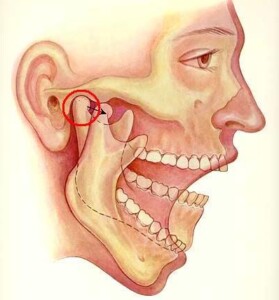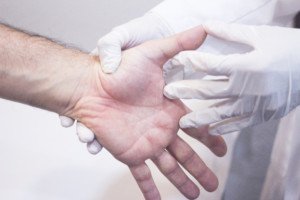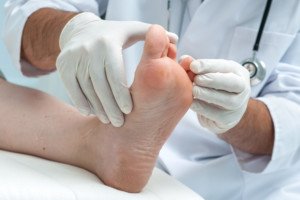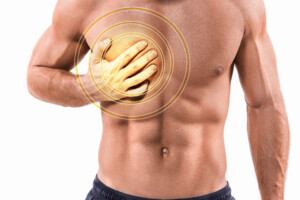
A myofascial trigger point pain specialist explains easy stretches to reduce TMJ disorder pain, plus what you should know BEFORE the dentist files your teeth.
TMJ is often referred to by specialists as TMD – temporo-mandibular dysfunction.
The muscles attached to the mandible — the jaw — become too tight and cause the jaw to close incorrectly. dentist file teeth
This irritation in turn causes nighttime grinding, which worsens the muscle tension.
It soon becomes a vicious cycle which can result in clicking and popping in the jaw joint, as well as jaw pain, severe tension headaches and inflammation of the ligaments. trigger point, pain
I am a myofascial trigger point therapist — I specialize in muscle pain and dysfunction, which yes, includes muscles in the jaw, face, head and neck.
Hopefully, I can treat a patient before it progresses this far, but sometimes it’s this bad by the time they find me. Fortunately it can be fixed!
What You Should Know BEFORE Your Dentist Files Your Teeth
It is paramount that patients do not allow the dentist to file or otherwise adjust the bite surfaces of the teeth before correcting the muscular imbalance.
If they do so, as the muscles continue to tighten, the bite continues to change, and the dentist will want to keep filing. dentist, teeth
Alternatively, when a dentist changes the bite surfaces before the jaw muscles are treated, symptoms persist.
Then, if and when the muscles are corrected, the teeth will no longer match up properly, perpetuating the irritation that leads to grinding, making it more difficult to resolve the problem.
Night Guard
Have a dentist who specializes in TMD make a night guard for the lower teeth.
The upper teeth act as a fulcrum, and a properly constructed lower night guard will help the jaw sit in the proper position against the uppers.
The guard will also protect the bite surfaces from wearing unevenly and making the problem worse until you get the grinding under control.
Self-Help at Home
The advice I give my patients for self-help at home is heat, massage and stretch. These are not a sufficient substitute for treatment, but until and after they get treatment, stretches will help reduce the grinding and the muscle tension.
NEVER stretch if it is painful, and NEVER stretch as far as the joint will allow; just 70 percent or so.
You should feel a comfortable, pleasant stretchy feeling, but never an extreme stretch sensation or pain.
Stretching far enough to feel pain makes muscles reflexively tighten up and can exacerbate the problem.
This is true of all muscles in the body, by the way, not just the jaw. Stretch gently, frequently (as much as hourly throughout the day), and briefly.
A rehabilitative stretch is not held, should be performed while exhaling, and should be slow and smooth — no sudden movements or jerking.
(I sometimes tell my patients to imagine that there is a bee sitting on them, and to stretch smoothly enough as to not alarm it.)
Do this brief, comfortable stretch three times and then stop. Over-repetition can cause muscle fatigue, leading back to muscle tension.

Theirry Canuel, CreativeCommons
• First, gently stretch the jaw muscles by opening your mouth wide and then relaxing it closed again. If opening is stiff but not painful, you can cautiously assist using your hands.
• Second, with the jaw relaxed, wobble from side to side.
• Third, close your mouth and puff out each cheek, one at a time.
Now do a little massage on the masseter muscles: Place your fingertips on the sides of your jaw, just in front of your ear lobes.
Using gentle pressure, smoothly stroke downward toward the angle of your jaw.
Massage the temporalis muscle — which attaches your jaw to your skull — by placing your fingertips at your temples and smoothing upward and backward into your hair, over the sides of your head.
Remember only to use as much pressure as feels good. In the case of sore, tight muscles, there is no gain with pain. Be kind to them! Never do anything that hurts.













